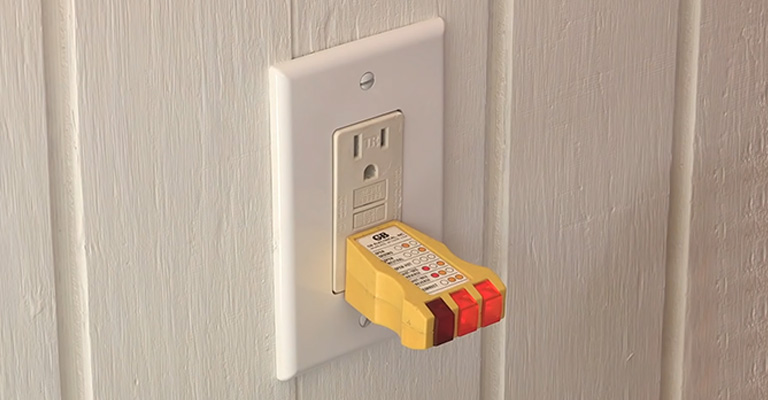How to Install Generator Transfer Switch (Step by Step)
The unpredictability of power outages can disrupt the day-to-day operations of your home. To ensure that your home is always powered, many homeowners invest in standby generators. However, to safely and effectively connect a generator to your home’s electrical system, a transfer switch is essential. If you’re considering installing one yourself, this guide offers a step-by-step approach to help you navigate the process.
Note: Working with electrical systems can be hazardous. If you’re uncertain about any step or process, consult or hire a licensed electrician.
A Step-by-Step Guide
1. Understand the Basics of a Generator Transfer Switch
A transfer switch allows you to switch between your home’s main power source and your backup generator. It ensures that the generator doesn’t back-feed into the grid, a situation which can be dangerous for linemen and your home’s electrical system. Two common types of switches are manual transfer switches and automatic transfer switches.
2. Gather Required Tools and Materials
- Transfer switch kit
- Screwdrivers
- Wire strippers
- Corded drill
- Adjustable wrench
- Interlock kit (optional for some setups)
- Necessary circuit breakers
3. Select an Appropriate Location
Choose a spot close to your main electrical panel, preferably within a few feet. The location should be dry, easy to access, and well-ventilated if near the generator.
4. Turn Off the Main Power
Safety first! Ensure you turn off the main breaker in your house to cut off the electricity before you start the installation process.
5. Install the Transfer Switch
- Mount the transfer switch to the wall using screws, ensuring it’s level.
- Open the front cover of the transfer switch to access the wires inside.
- Identify the circuits you want the generator to power in case of an outage. It could be essential circuits like the refrigerator, lights, and heating.
6. Connect the Transfer Switch to the Selected Circuits
- Go to your main electrical panel.
- Turn off the breakers for the circuits you identified in step 5.
- Detach the wire from the circuit breaker, and connect it to the corresponding wire in the transfer switch. This might involve threading the wire from the switch to the panel.
- Take another wire from the transfer switch and connect it back to the circuit breaker. Essentially, you’re making the transfer switch an intermediary between the breaker and your home’s circuits.
- Secure the wire connections using wire nuts.
7. Connect the Transfer Switch to the Generator
- Use a heavy-duty power cord to connect the switch to the generator’s outlet.
- Ensure you’ve chosen the right plug type and voltage to match your generator’s specifications.
8. Test the System
- Turn on the main power for your house.
- Start your generator and let it run for a few minutes.
- Turn the transfer switch from “LINE” to “GENERATOR”. You should see the power being transferred from the main line to your backup generator. The circuits connected should now be powered by the generator.
- Turn the switch back to “LINE” once you’ve confirmed everything works correctly.
9. Document the Process
It’s a good idea to label the circuits in both your main electrical panel and the transfer switch. This ensures clarity for any future reference or for anyone else unfamiliar with the setup.
10. Regular Maintenance
To ensure longevity and efficiency, periodically inspect the system. Check for any worn out components, loose wires, or signs of damage. Test the system occasionally to confirm everything operates smoothly.
Important Tips and Considerations
Safety Precautions
Electrical installations require extreme care and attention to detail. Always wear appropriate personal protective equipment, including rubber gloves and safety goggles. If you ever feel unsure about a particular step, pause and seek professional advice.
Permits
Before you start the installation, check local regulations. Some jurisdictions require permits for the installation of generator transfer switches. Ensuring compliance can prevent potential legal complications in the future.
Automatic vs. Manual Transfer Switches
As mentioned earlier, there are two primary types of transfer switches: manual and automatic. Manual switches require you to manually change the power source from the grid to the generator. In contrast, automatic switches detect a power loss and switch sources without your intervention. The installation process might vary slightly based on the type you choose.
Capacity
Ensure the transfer switch you select can handle the maximum load of the circuits you connect. Overloading the switch can result in damage or even fires.
Professional Help
While this guide offers a general overview for installing a transfer switch, certain scenarios might demand specialized knowledge. Older homes, homes with unique wiring, or systems that have been previously modified can present challenges for DIY enthusiasts. In these cases, hiring a professional electrician might be the safer and more effective route.
Wrap Up
Both the manual transfer switch and the automatic transfer switch provide homeowners with the peace of mind that they can safely transfer power from utility power to generator power, ensuring a continuous power supply. The transfer switch installation process, although intricate, is crucial for anyone with a standby generator, be it for portable generators or larger units.
While a manual transfer switch demands human intervention to restore power, an automatic transfer switch effortlessly bridges the gap between a sudden loss of utility power and the initiation of generator power. Investing in either a manual or automatic transfer switch is indispensable for homeowners who value an uninterrupted power supply. Beyond merely providing power during outages, these switches ensure that the transfer is smooth and safe.
As outages become more frequent in many regions, having a reliable transfer system paired with portable generators or a standby generator becomes less of a luxury and more of a necessity. Ensure you make the right choice for your home and always prioritize safety in any electrical setup.






